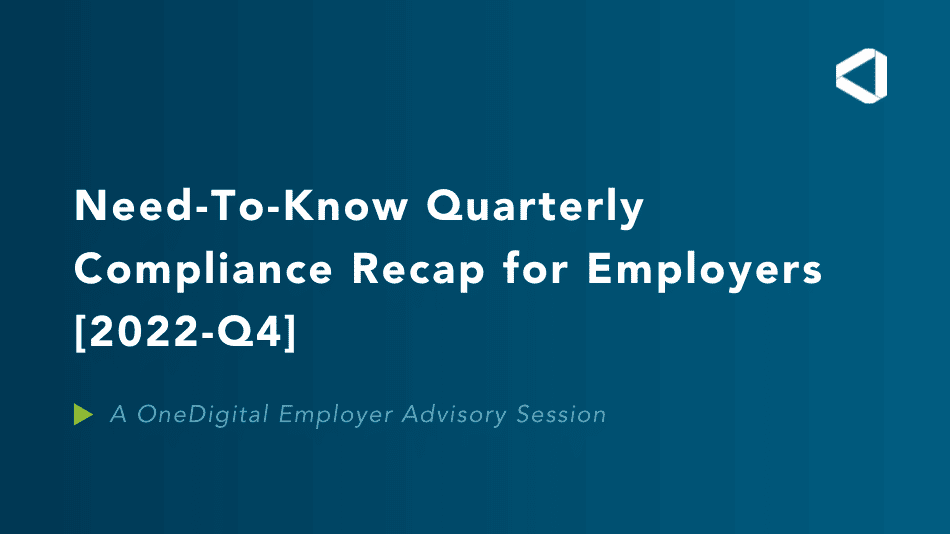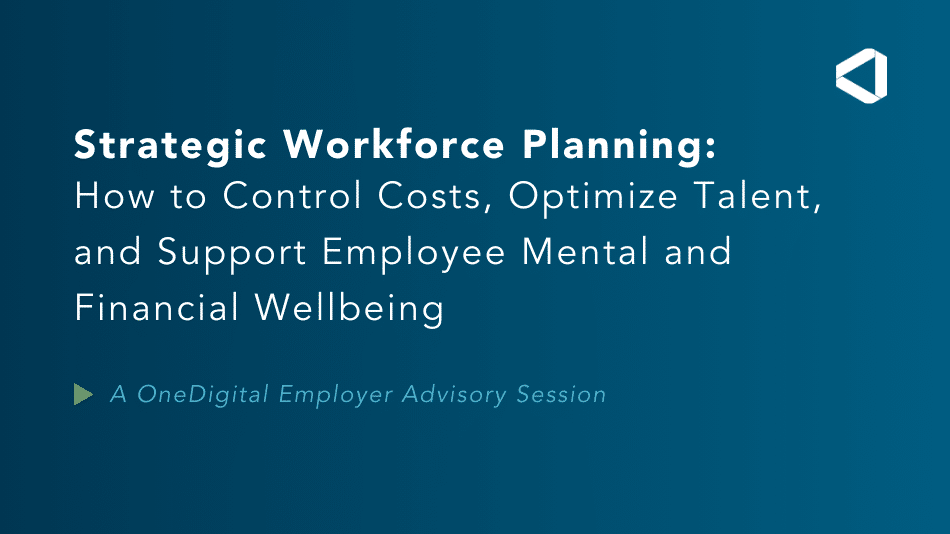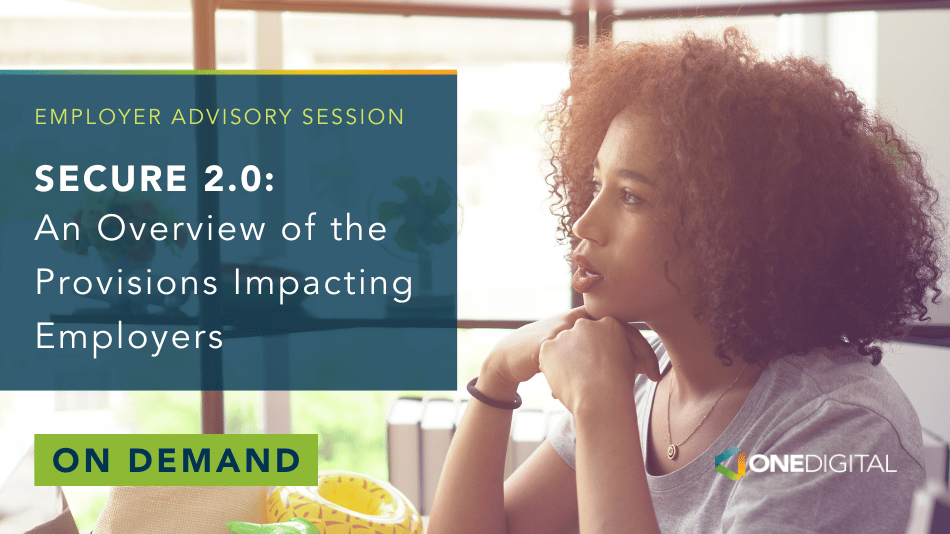Better Benefits
Re-Visiting Your Retirement Plan & It’s Participants in a Post-COVID-19 World
Re-Visiting Your Retirement Plan & It’s Participants in a Post-COVID-19 World
As business communities around the country begin easing their operations back to full capacity, many organizations will take the necessary time to assess the short term and long-term impact of this global slowdown.
As the COVID-19 outbreak and ensuing national lockdown wreaked havoc on commerce in the United States, some organizations took precautionary steps to make plan design changes and or reduce benefits associated with the organization’s retirement plan as a means of reducing expenses.
Over this same period, retirement plan participants have had no shortage of exposure to media headlines of significant volatility in the financial markets and its’ impact on 401k & 403b plans. Simultaneously, the passing of the CARES Act provided expanded pre-retirement access to qualified retirement accounts for participants who had been impacted by the outbreak. All of these factors created, in many cases a “perfect storm” for irrational and potentially harmful decision making by plan participants.
While not under the ideal set of circumstances, this “stress test” has given plan fiduciaries insight into potential blind spots that otherwise may not have been apparent. It also provides a rare opportunity for Plan Sponsors to revisit the overall effectiveness of both the retirement plan design and benefit spend.
Emergency Savings & Financial Wellness
The lack of inadequate emergency savings, though not a new issue, is certainly one that has been recently exacerbated by the COVID-19 crisis. In a recent study, Prudential found:
- 25% of American workers spend their full paycheck each month
- 63% can’t meet a $500 emergency
- 50% of working-age households’ risk being unable to achieve the same standard of living in retirement
These same American workers, even those in seemingly stable employment environments, quickly found themselves laid off, furloughed, or having work hours or wages reduced as a result of the COVID-19 Outbreak. The sudden and unexpected reduction or loss of wages, in addition to the lack of an emergency savings cushion, created significant financial challenges for many families in an already uncertain and unpleasant situation.
Plan sponsors in affected industries will have an opportunity in the coming months to review the financial impact COVID-19 had on the retirement account balances of their workforces by reviewing historical distribution activity, including any Coronavirus related distributions taken during this period of economic uncertainty. This will provide a window of insight to the plan sponsor and provide an overall assessment of the workforce’s preparedness for unforeseen emergencies such as the recent outbreak and also open the door for solutions to aid employees in the future.
There is no one size fits all approach to this topic, and there are a variety of ways to approach this subject with your workforce. The simple method of providing counseling and education sessions not focused on stocks and bonds but perhaps a focus on budgeting, debt management and emergency savings can be immediately effective at almost no cost to the employer. An organization wishing for a more hands-on approach may involve rolling out an interactive Financial Wellness solution, like Financial Elements. This solution provides the ability for an employee to receive 1-on-1 guidance, ensuring participants have a plan and a path forward to a solid financial foundation, including an emergency savings solution.
One approach that may gather some steam shortly due to the fallout from COVID-19, as well as legislation making headway in Congress, is the idea of employer-sponsored emergency savings accounts. Though this concept somewhat exists today by utilizing “after-tax” 401k contributions, there will likely be increased adoption of these types of vehicles and features soon as legislation aims to make it easier for employers to automatically enroll employees into these types of savings vehicles.
Revisit Auto Features, Defaults and Employer Contribution Spend
If your organization decided to reduce or suspend any employer contribution, when the decision is made to reinstate an employer contribution, there is a positive aspect in the form of a “blank slate” from a plan design and benefit spend perspective. The change in contribution added the assistance of historical plan data on which to base decision-making.
If your plan has not considered automatic enrollment and automatic escalation in the past, it may make sense to re-engage your participant base with an automatic enrollment feature. With widespread adoption by plan sponsors since the passing of the Pension Protection Act in 2006, there is a multitude of data to support the effectiveness of automatic features as well as the warm reception the process receives from the majority of participants.
If your plan has already adopted automatic provisions, consider “re-enrolling” or increasing your default enrollment percentages. More plan sponsors are considering the impact of setting default rates “too low” and inadvertently setting employees up to save less than the necessary levels to meet their retirement goals.
Work with your plan’s consultant and recordkeeper to gather historical savings rate, demographic and other relevant data to help guide this discussion. This data can be particularly useful in determining the proper default contribution as well as aligning the employer contribution formula to help achieve the desired participant outcome. By undergoing this exercise prior to reinstating or modifying any employer contribution, it allows the plan sponsor the ability to consider various employer contribution scenarios and formulas both from a financial and retirement readiness perspective and use data to support decision-making.
This exercise not only increases the effectiveness of the retirement plan for its participants but ensures the organization is utilizing the dollars allocated to benefit spend as efficiently as possible. By using data to realign the automatic enrollment and escalation features, an organization can simultaneously increase the retirement security of its workforce as well as shore up the organization’s bottom line now and long into the future.
In-Plan Income Solutions
Though still very early in terms of adoption rates, the recently passed SECURE Act paved the way for plan fiduciaries to consider implementing in-plan income solutions with an added Fiduciary Safe Harbor if certain prudent processes are followed to select and monitor the provider chosen. In periods such as the recent market volatility, in-plan income solutions (typically provided through an annuity) can provide stability, downside protection and guaranteed income for those closest to retirement. However, this usually comes with an added cost.
Though this type of investment has long been available, it may not be a fit for every plan and its participants, and as such, plan fiduciaries should consider all risks and perform the necessary due diligence before adopting an in-plan income solution.
In Conclusion
Plan sponsors should take the necessary time to carefully review the impact this period of global pandemic and ensuing economic uncertainty has had on its retirement plan benefits. Plan sponsors can use data generated during this period of financial stress to better inform decisions around plan design and highest and best use of dollars allocated to the Retirement Plan benefits. Recent legislation and global events have created an immediate need for plan sponsors to evaluate the effectiveness of the benefits and seek out solutions to any blind spots that may have presented themselves during this turbulent time.
For more information on the essential steps businesses should take in the wake of the coronavirus, visit our OneDigital Coronavirus Advisory Hub, or reach out to your local OneDigital advisory team.
Investment advice provided by Resources Investment Advisors, LLC, an SEC-registered investment adviser and subsidiary of OneDigital.
Share
Related News & Updates

Article
Addressing an Aging Workforce
7.06.2023



